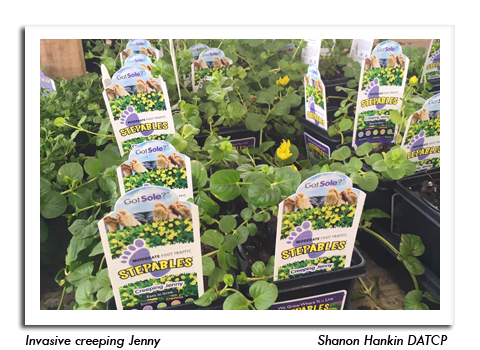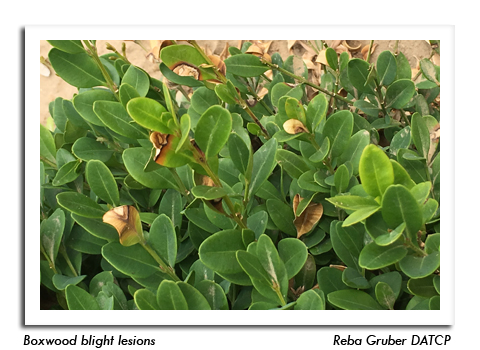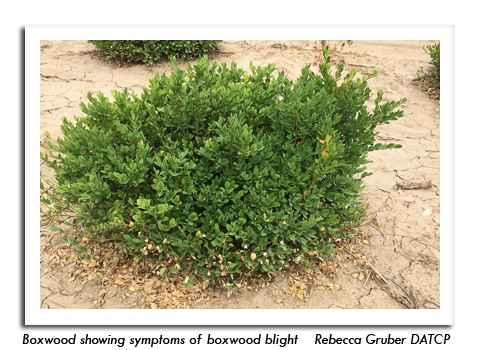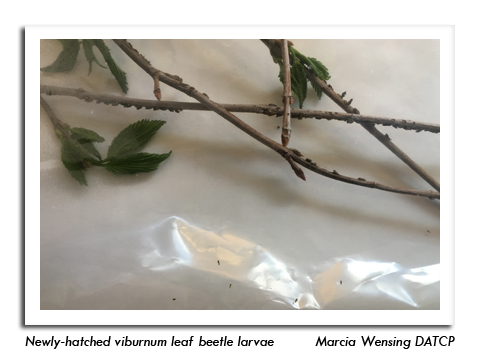
 |
|
|
Nursery & Forest
Volume 64 Number 3 Date 05/16/2019 CREEPING JENNY - This invasive species was recently found by inspectors at two southwestern Wisconsin nursery dealers. Creeping Jenny, or moneywort, is a "restricted" plant under the Chapter NR40 Wisconsin invasive species rule. Restricted plants are defined as already established in the state and have caused or have the potential to cause "significant environmental or economic harm". The cultivar creeping Jenny 'Aurea' and yellow and gold leaf forms are not considered invasive and are exceptions to the rule. Any invasive plants listed under the NR40 Rule should be immediately removed from sale, double-bagged, and disposed of. The phase-out period for restricted herbaceous plants expired in May 2018. Accordingly, no further importation or propagation of these plants is allowed in Wisconsin. A similar phase-out period for several species of NR40-restricted trees and shrubs will end on May 1, 2020. BOXWOOD BLIGHT - This devastating fungal disease was found on "Korean" boxwoods earlier this month in a Dane County nursery. A Pest Abatement Order directing the removal and destruction of all boxwood plants of the same variety and from the same source was issued in response. This is the first Dane County interception of boxwood blight. The disease was previously found in a Kenosha County nursery last August. Symptoms of boxwood blight are similar to other common boxwood diseases of such as Volutella blight, making laboratory diagnosis imperative. The brown spots that initially appear on the leaves eventually coalesce and lead to defoliation, while infected stems develop dark lesions. White fungal spores can also be seen without magnification on the undersides of infected leaves and on stem lesions. Spores may remain viable for six years on plant debris and in the soil. Movement of infected nursery stock, tools and equipment is the primary pathway by which the disease spreads. Purchasing boxwoods from clean sources that have been inspected or tested for boxwood blight is strongly advised. Newly-purchased plants or cuttings should be isolated and kept under observation for a minimum of four weeks. During this period, fungicides should not be used. If boxwood blight is suspected, contacting your county Extension office is recommended. Additional information is available on the DATCP Boxwood Blight page. VIBURNUM LEAF BEETLE - Larvae of this relatively new pest to Wisconsin were reported to have hatched near Milwaukee during the week beginning May 5. This invasive defoliator has now been found in six southeastern counties since 2009, including Kenosha, Milwaukee, Ozaukee, Waukesha, Washington and Winnebago. As its name suggests, the viburnum leaf beetle feeds exclusively on viburnums, completing one generation per year beginning with egg hatch in spring. The larvae now emerging will consume foliage until they pupate in the soil next month. The adults emerge in mid-summer. Viburnum leaf beetle is particularly damaging because successive feeding by larvae and adults prevents shrubs from refoliating and can kill healthy plants after 2-3 years of heavy infestation. -- Shanon Hankin, DATCP Nursery Inspector 





|
|
|